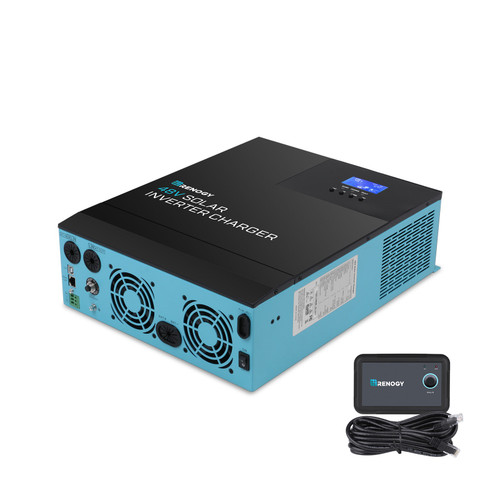I live full time offgrid on Storm Mountain CO while building my log cabin.
Been running the following 12v system with great luck: 8 Renogy 200ah AGMs in parallel, 40amp Renogy controller, 2000w Renogy inverter/charger and 9 100w Renogy panels in parallel. The batteries are less than 6 months old, but the rest of those components are about 3 years old. This system worked great and full sun days (even in winter) it would get down to about 12.4v.
On a whim, I recently saw that Renogy has the 48v 3500w controller/inverter, so I bought it. I got it wired up yesterday. The batteries are in 2 parallel strings with 4 in series. I wired up 12, 100w panels and now have 2 parallel strings of 6 panels in series.
Today was a full sun day. I monitored the controller during full sun and it said the panels were ~125 volts and the max input amps I saw was around 8.
Now the batteries are sitting at 49.7v.
What gives? I'm running 2 more panels that I was two days ago. I'm gonna have to run the generator tonight. Had I left my existing 12v system alone, the batteries would have floated most of the day and i would not have to run the generator tonight.
Do I need more panels or??
Been running the following 12v system with great luck: 8 Renogy 200ah AGMs in parallel, 40amp Renogy controller, 2000w Renogy inverter/charger and 9 100w Renogy panels in parallel. The batteries are less than 6 months old, but the rest of those components are about 3 years old. This system worked great and full sun days (even in winter) it would get down to about 12.4v.
On a whim, I recently saw that Renogy has the 48v 3500w controller/inverter, so I bought it. I got it wired up yesterday. The batteries are in 2 parallel strings with 4 in series. I wired up 12, 100w panels and now have 2 parallel strings of 6 panels in series.
Today was a full sun day. I monitored the controller during full sun and it said the panels were ~125 volts and the max input amps I saw was around 8.
Now the batteries are sitting at 49.7v.
What gives? I'm running 2 more panels that I was two days ago. I'm gonna have to run the generator tonight. Had I left my existing 12v system alone, the batteries would have floated most of the day and i would not have to run the generator tonight.
Do I need more panels or??





